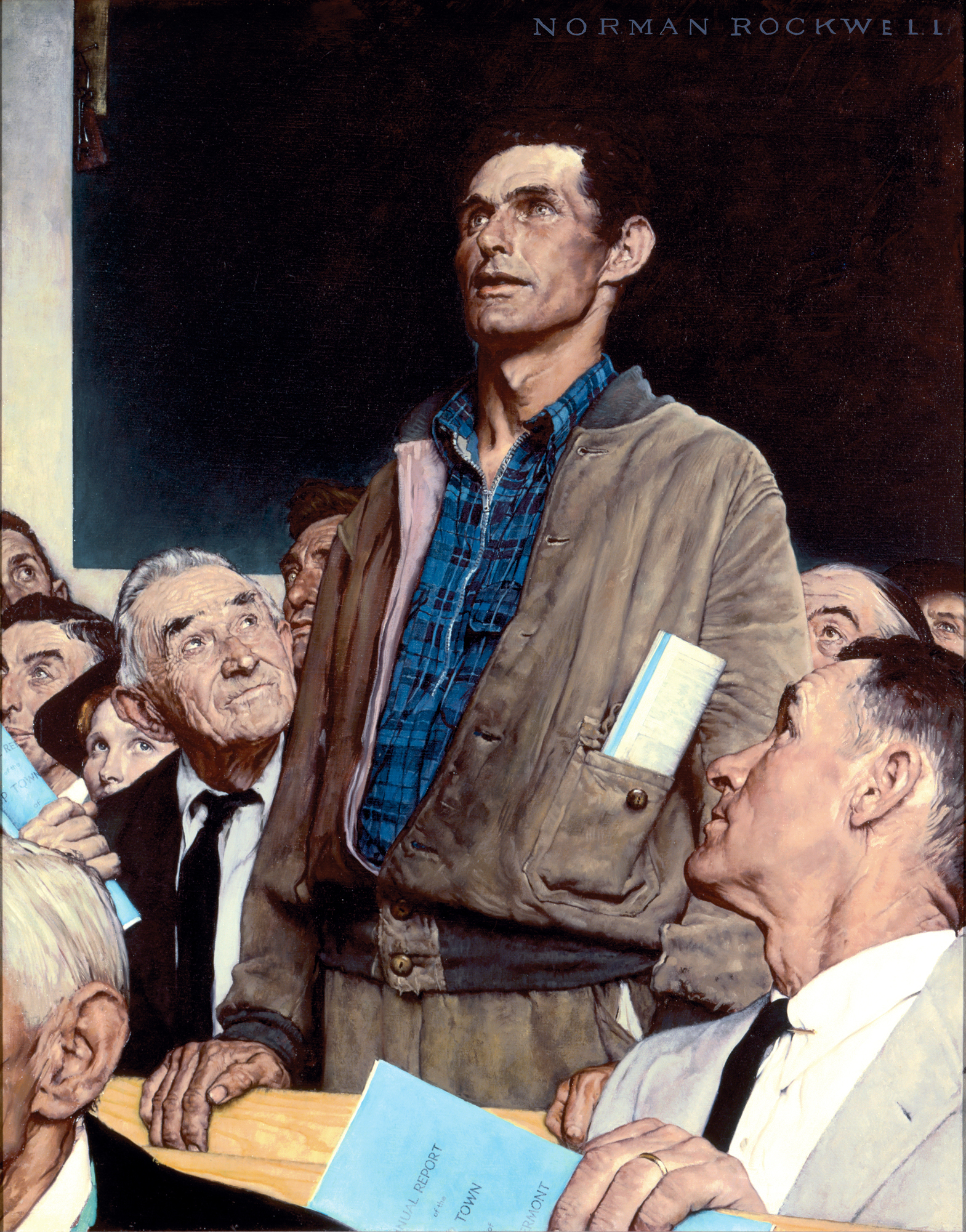The Iowa State Constitutional Convention Clearinghouse
This website provides news, pro & con, historical, and other information related to Iowa’s constitutionally mandated November 3, 2020 referendum on whether to call a state constitutional convention.
Constitution and Constitutional Convention Data
Iowa’s Four Constitutions
| Date | Duration | Comment | |
| 1836 | 2 Years | 1st pre-statehood constitution. Provided by Congress for the Territory of Wisconsin, which then included Iowa. The people of Iowa were not given the opportunity to ratify this constitution. | |
| 1838 | 8 Years | 2nd pre-statehood constitution. Provided by Congress for the Territory of Iowa. The people of Iowa were not given the opportunity to ratify this constitution. | |
| 1846 | 11 Years | 1st statehood constitution. Iowa became a state on Dec. 28, 1846. This constitution was ratified by the people of Iowa. | |
| 1857 | 163 Years | 2nd statehood constitution, effective Sept. 3, 1957. This was the second and current constitution ratified by the people of Iowa and now includes 48 amendments. Iowa’s population of Iowa was 517,875 (based on the 1856 census) when this constitution was written. |
Iowa’s Three Constitutional Convention Delegate Elections
| Election Date | Total # | Male # | Female # | Male % | Female % | White # | White % | Political Party |
| August 1844 | 72 | 72 | 0 | 100 | 0 | 72 | 100 | 21 Whigs; 51 Democrats |
| April 1846 | 32 | 32 | 0 | 100 | 0 | 32 | 100 | 10 Whigs; 22 Democrats |
| November 1856 | 36 | 36 | 0 | 100 | 0 | 36 | 100 | 21 Republicans; 15 Democrats |
Note: Prior to 1844, the Legislature twice failed to get the people to approve calling a convention. The procedures associated with convention calls were specified in the enabling act. For example, the 1842 enabling act specified that the people would vote on whether to call a convention at the general election in August 1842, that the convention would have 82 delegates that would be elected on the second Tuesday in October 1842, that the convention would convene in the Capital on the first Monday in November 1842, and the people would vote on whether to ratify the convention’s proposal(s) at the general election in August 1843.
The Duration & Cost of Iowa’s Three Constitutional Conventions
Start Date, End Date, Duration, Cost
| Start Date | End Date | Duration | Cost |
| October 7, 1844 | November 1, 1844 | 25 days | $7,854 |
| May 4, 1846 | May 19, 1846 | 15 days | $2,844 |
| January 19, 1857 | March 5, 1857 | 39 days | N.A. |
Iowa Legislature’s Track Record of Calling Constitutional Conventions*
| Legislature Vote Date |
Standard Convention Process?** | Voters Approve Referendum? | Comments |
| July 31, 1840 | Yes | No | |
| February 16, 1842 | Yes | No | |
| February 12, 1844 | Yes | Yes | |
| June 10, 1845 | No | N.A. | Legislature resubmits to voters previously rejected convention proposed constitution without calling for a new convention. Nine state legislators in the opposition argue that this violates Iowa’s Constitution, as the Legislature has no delegated powers to resubmit such a referendum on whether to ratify a constitution. The Legislature goes ahead with the referendum and the voters once again reject the proposed constitution. |
| January 17, 1846 | No | N.A. | This time the Legislature approved calling a convention without first asking the people whether they want to call another convention. |
| January 24, 1855 | Yes | Yes |
* With the mandatory periodic constitutional convention referendum, the Legislature doesn’t place the convention call on the ballot for voter approval, as the call is placed on the ballot automatically; that is, even if the legislature is opposed to calling a convention.
** The standard convention process, regardless of whether a convention is called by a legislature or periodic referendum, entails three steps: 1) voters choose whether to approve a referendum to call a convention, 2) voters elect delegates to a convention, and 3) voters choose whether to ratify a convention’s proposals. In 1844, Iowa’s Legislature skipped 1) and 2). In 1846, it skipped 1).
Iowa Voters’ Track Record of Calling Constitutional Conventions
| Vote Date* |
Yes # |
No # |
Yes % |
No % |
Called? |
| August 1840 |
937 | 2,907 | 24.38% | 75.62% | No |
| August 1842 |
4,129 | 6,825 | 37.69% | 62.31% | No |
| April 1844 |
6,719 | 3,974 | 62.84% | 37.16% | Yes |
| August 1856 |
32,790 | 14,612 | 69.17% | 30.83% | Yes |
| 1870 | 24,846 | 82,039 | 23.25% | 76.75% | No |
| 1880 | 69,762 | 83,784 | 45.43% | 54.57% | No |
| 1890 | 27,806 | 159,394 | 14.85% | 85.15% | No |
| 1900 | 176,337 | 176,892 | 49.92% | 50.08% | No** |
| 1910 | 134,983 | 166,054 | 44.84% | 55.16% | No |
| 1920 | 279,652 | 221,763 | 55.77% | 44.23% | Yes*** |
| 1930 | 140,667 | 195,356 | 41.86% | 58.14% | No |
| 1940 | 199,247 | 352,142 | 36.14% | 63.86% | No |
| 1950 | 221,189 | 319,704 | 40.89% | 59.11% | No |
| 1960 | 470,257 | 534,628 | 46.80% | 53.20% | No |
| 1970 | 204,517 | 214,663 | 48.79% | 51.21% | No |
| 1980 | 404,249 | 640,130 | 38.71% | 61.29% | No |
| 1990 | 179,762 | 491,179 | 26.79% | 73.21% | No |
| 2000 | 299,972 | 598,318 | 33.39% | 66.61% | No |
| 2010 | 317,577 | 649,316 | 32.85% | 67.15% | No |
* Note on election dates. The April 1846 election was for April township elections. The August 1840, August 1842, and August 1856 elections were for general elections. The periodic constitutional convention referendum elections beginning in 1870 were for general elections.
** Official county results from the 1900 referendum showed it passing from Nov. 6, 1900 through Nov. 27, 1900. On Nov. 28, Iowa’s canvassing board found 1,000 no votes that allowed it to turn the apparent yes vote into a no vote. For details, see the separate web page under the history menu item on Iowa’s 1900 constitutional convention referendum.
*** The 1920 convention was called, but the Legislature refused to pass the enabling legislation to convene it. The House and Senate claimed they couldn’t agree on the terms for convening it.
Iowa Voters’ Track Reford of Ratifying Constitutional Convention Proposals
| Vote Date | Yes # |
No # |
Yes % | No % | Comment |
| April 7, 1845 | 6,023 | 7,019 | 46.18 | 53.82 | Constitution proposed by the 1844 constitutional convention rejected 1st time. |
| August 1845 | 7,235 | 7,656 | 48.59 | 51.41 | The Legislature didn’t like the rejection, so resubmitted the same constitution a second time, which the people then rejected a second time. It is unclear if this resubmittal without calling another convention was constitutional. |
| Aug. 3, 1846 | 9,492 | 51.23 | 9,036 | 48.77 | Proposed constitution approved; presented to Congress and approved on December 28, 1846. |
| Aug. 3, 1857 | 40,311 | 38,681 | 51.03 | 48.97 | The convention’s main proposal; approved by voters. |
| Aug. 3, 1857 | 8,479 | 49,267 | 14.68 | 85.32 |
A separate convention amendment to make blacks equal to whites; rejected by voters. The specific question was: “Shall the word ‘white’ be stricken out of the constitution wherever it occurs?”
|
‘
Note on sources: many sources, especially those dealing with pre-20th Century elections, have many minor conflicts in the data they contain. Most of these conflicts are probably due to typos; for example an “8” transposed into a “6” in a four digit number. Even Benjamin Shambaugh’s authoritative The Constitutions of Iowa has discrepancies both within his text and with other reputable sources. Shambaugh was for 40 years the superintendent of the State Historical Society of Iowa and a professor of political economy at the University of Iowa. Where there have been conflicts, which may amount in an early source to no more than typographical errors (and then repeated by later sources), I have tried to go with what seemed the most authoritative source. Sometimes a seemingly well-defined concept has some ambiguity. For example, Shambaugh at various points says that Iowa’s 1844 constitutional convention had 73 and 72 delegates. It turns out, both answers are correct! The 73rd member appears never to have attended the convention. Most sources appear to go with the 72 delegate number.
I have considered contemporary Iowa state government sources as most authoritative, despite the Iowa Legislature’s track record since 1870 of opposition to calling a state constitutional convention in Iowa. One reason for the poor data may be the Iowa Legislature’s lack of interest in documenting its full record concerning its enthusiastic and repeated support for state constitutional conventions prior to 1857.
I may be using some data for purposes not originally intended. For example, I calculate voter participation rates in elections for calling a state constitutional convention based on the highest vote for any office on the ballot, which I take to be either the presidential or gubernatorial election depending on the year. But my sources on those election results may only report the results for, say, the top four gubernatorial or presidential candidates. If so, I may not have counted the votes for all the fringe candidates, which are generally not of interest to students of elections.
Search This Website

